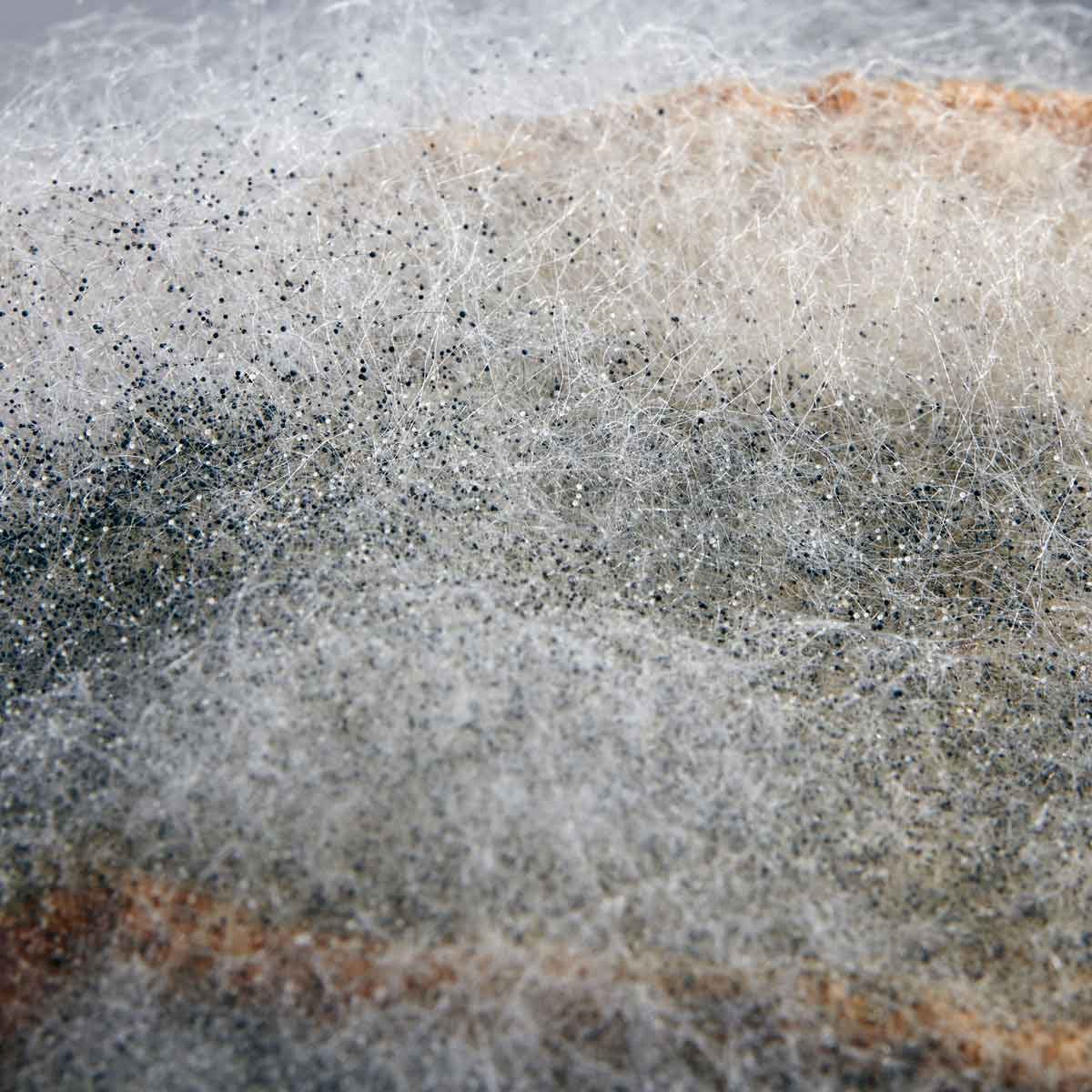Black bread mold doesn't just grow on bread. Learn all about this widespread type of mold and how to get rid of it, once and for all.

What to Know About Rhizopus Stolonifer (Black Bread) Mold

On This Page
What Is Rhizopus Stolonifer (Black Bread) Mold?
This thread-like organism is one of the most common types of Rhizopus mold around the world. The genus was first identified in 1818 by German scientist Christian Gottfried Ehrenberg. To date, 10 species of Rhizopus have been identified, including the most commonly seen, Rhizopus Stolonifer. The common name of this particular organism, black bread mold, comes from its tendency to grow on bread. The spores of this mold change shape depending on the food source.
Where Is It Commonly Found?
Rhizopus Stolonifer spores are found everywhere in the natural world, but they need moisture and a food source of starch or sugars to begin growing. As with many types of molds, Rhizopus has at least one practical use: It’s part of the production of steroid medications.
Different species of Rhizopus cause agricultural losses, especially affecting fruits and vegetables. Leak disease in soft fruits such as tomatoes, strawberries and stone fruits, as well as pole rot in tobacco leaves, are caused by different Rhizopus species.
What Are the Health Effects?
Zygomycosis (also called mucormycosis) is the most common human disease caused by a species called Rhizopus arrhizus. While most people are constantly exposed to Rhizopus and other molds with no health issues, it’s typically immunocompromised people who will come down with illness from Rhizopus Stolonifer. Zygomycosis infections are rare, but when they do happen they tend to affect the face, nose and mouth.
How to Remove and Prevent Rhizopus Stolonifer (Black Bread) Mold
This fast-growing mold looks like fuzzy white cotton when it’s growing on food. Reducing moisture levels is the first step towards eradication of Rhizopus Stolonifer in the home, but there is more you can do. Because this mold depends on starches and sugars for a food source, keeping your home clean and free from food debris and dust will help. Rhizopus is easier to deal with than other household molds because it requires a specialized food source to grow. If you do find some in your home, treat the area with a registered fungicide and do what’s necessary to reduce moisture levels to stop the mold from coming back. If you’ve got mold staining on visible surfaces that you care about, get rid of the stains with an oxygen-based mold stain remover.




















